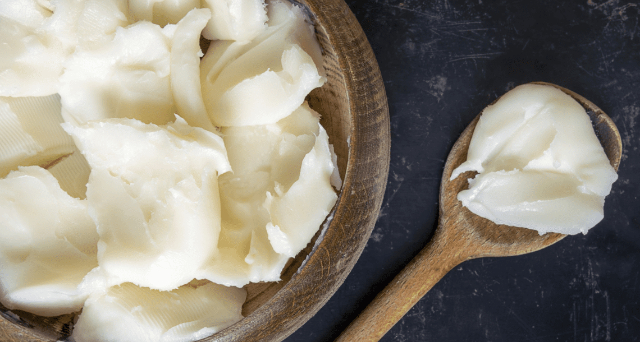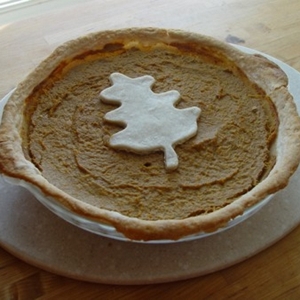Most folks will say lard has had its day. And that day is long past. But serious chefs are dabbling with the idea of a Lard Renaissance. Albeit on a limited basis. Pie crust connoisseurs are particularly interested in a new legitimacy for lard…

Where lard stands
Where it stands is in a dismal cave in the back of beyond of the culinary landscape. All but forgotten – shunned like a leper – by serious, well-informed cooks. Those folks have, for the most part, graduated from animal fats to vegetable fats for such applications as deep frying and pastry-making.
That’s a natural result of the Great Shift at the end of the last century to non-saturated fats. After the traditional saturated fats were found to play a leading role in heart disease and other afflictions.
Butter remains a daily essential in most of our lives. In spite of the fact that it’s full of saturated fat, nutritional and medical experts now say it’s benefits outweigh its drawbacks.
Vegetable products such as Canola Oil have largely taken the place of vegetable fats that are solid at room temperature. They, too, have a small amount of saturated fat. But they’re hydrogenated. That’s why they are solid at room temperature. And that makes them high in trans fats – which elevate bad cholesterol and reduce good cholesterol in your body. That’s made vegetable shortening – the first resort of cooks who wanted to avoid lard for decades – as undesirable as animal fats.
A little history…
Lard first became unpopular in the early years of the last century, after a groundswell of protect over conditions in meat packing plants. Lard was an important byproduct. Sanitation was the main issue. That was many decades before anybody became concerned about saturated or trans fats.
That was when ‘civilized’ folks began abandoning lard in favour of vegetable shortening.
The State of the Crust
Most cooks I know who make pastry regularly still use vegetable shortening to ensure a light, flaky product. I do. But that’s not the same as using it every day in a variety of culinary roles. And shortening remains the defacto ‘best alternative’ to lard for recipes that require solid fat for ‘mechanical’ reasons.
However… There is a small – and apparently growing – cadre of cooks who still swear by lard for pie crust and other select applications. And now, they are being heard again, after a long silence.
Trending now…
Dedicated lard fans will tell you, you simply can’t get as perfect and flaky a pie crust with shortening as you can with lard. And when you use lard, working the dough ‘right’ is a breeze. But the big advantage of lard as they see it is the flavour. Vegetable shortening is more or less flavourless.
Remember the big kerfuffle when McDonald’s (and subsequently other Fats Food chains) stopped using lard in their deep fryers, for health reasons? They switched to vegetable oil, and fans began complaining about the change in the flavour of their fries. What they missed was a nuance contributed to the final product by lard. So insistent were customers about the flavour deficit that McD’s and others started adding back some lard to their frying oils. And later, went to a special artificial ‘lard flavouring’ additive. That’s how important the flavour factor is.
Lard’s champions speak out
“It produces pastry crust with unparalleled flakiness, seared fish that takes on pleasantly meaty undertones and potatoes that fry up crisp and clean,” says Staffan Terje, chef and co-owner of the trendy Perbacco resto in San Francisco, told the SF Chronicle.
“It just makes a really rich, wonderful dish,” he insists. “Lard is taking back its rightful spot in cooking.”
My take
I agree with Terje. A little lard now and then – like in a pie crust once or twice a month – is surely a pardonable sin. And definitely a special pleasure!
~ Maggie J.

